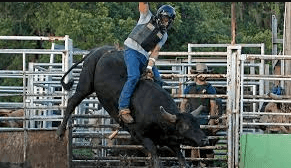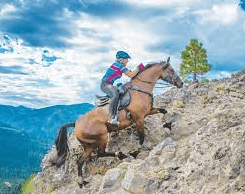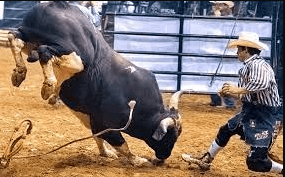How Can One Prevent Injuries In Cross-Country Riding?

Cross-country riding is a thrilling and exhilarating equestrian sport that allows riders to experience the freedom of galloping through open fields and tackling various obstacles. However, it is not without its risks. Riders can be prone to injuries, both minor and severe, if proper precautions are not taken. Therefore, it is vital for riders to be knowledgeable about preventative measures in order to minimize the risk of injuries and continue enjoying this adventurous activity.
To prevent injuries in cross-country riding, wearing appropriate safety gear is of utmost importance. This includes a well-fitted helmet that meets safety standards, as head injuries can have serious consequences. Additionally, riders should invest in protective vests designed specifically for equestrian sports to reduce the risk of rib fractures or organ damage in case of falls or collisions. Proper footwear with sturdy soles and heel support should also be worn to provide stability and protect against foot-related injuries.
In addition to wearing safety gear, following proper training techniques is crucial for injury prevention in cross-country riding. Riders should undergo thorough training under experienced instructors who can teach them proper balance, posture, and technique while navigating different terrains and obstacles. Learning how to correctly approach jumps, maintain control over the horse’s speed and direction, and execute effective emergency maneuvers will greatly reduce the chances of accidents occurring.
Furthermore, regular practice sessions focused on improving core strength, balance, flexibility, and coordination will enhance overall fitness levels and help riders stay safe during their rides.
By prioritizing safety through appropriate safety gear usage and implementing proper training techniques, riders can significantly decrease their risk of sustaining injuries while engaging in cross-country riding. It is essential for riders to take proactive steps towards protecting themselves from harm without compromising their sense of adventure or freedom on horseback.
Wear Appropriate Safety Gear
Appropriate safety gear should be worn to minimize the risk of injuries in cross-country riding.
One crucial piece of equipment is a proper helmet, which provides protection for the rider’s head in case of falls or collisions.
A well-fitted helmet can significantly reduce the risk of head injuries, such as concussions or skull fractures.
Additionally, wearing a protective vest is also essential in cross-country riding.
This vest offers extra padding and support to the rider’s torso, safeguarding vital organs and reducing the impact force during falls or accidents.
By wearing a proper helmet and protective vest, riders can enhance their safety measures and mitigate potential injuries while enjoying the freedom of cross-country riding.
Follow Proper Training and Technique
Followers of correct training methods and adhering to proper technique can navigate the challenging terrain of cross-country riding with precision and finesse, reducing the risk of missteps that may lead to unfortunate mishaps.
One crucial aspect of preventing injuries in cross-country riding is ensuring a proper warm-up before each ride. This allows the rider and horse to gradually prepare their muscles, joints, and cardiovascular system for the demands of the activity.
A thorough warm-up routine should include stretching exercises, light jogging or trotting, and perhaps some jumping exercises at lower heights.
Additionally, using proper riding equipment is essential for injury prevention. This includes wearing a well-fitted helmet to protect against head injuries in case of falls or collisions. Riders should also use appropriate footwear with a sturdy sole and heel for better stability in the stirrups. Additionally, protective vests can provide extra safety by absorbing impact during falls or accidents.
Following these practices not only reduces the risk of injuries but also enhances overall performance and enjoyment in cross-country riding, allowing riders to experience the freedom they seek while minimizing potential risks.
Maintain Your Horse’s Health and Fitness
Maintaining the health and fitness of a horse is crucial for navigating the challenging terrain of cross-country riding with precision and finesse, reducing the risk of mishaps.
The horse’s diet plays a significant role in ensuring its overall well-being. A balanced diet that includes high-quality forage, such as hay or pasture, along with appropriate grain or concentrate feed, can provide the necessary nutrients for optimal performance and recovery.
Regular veterinary check-ups are also essential to monitor the horse’s health status and address any potential issues early on. This proactive approach allows for early detection of problems like lameness or respiratory conditions, which can significantly affect a horse’s ability to perform effectively in cross-country riding.
By prioritizing their horse’s diet and scheduling regular veterinary check-ups, riders can take important steps towards preventing injuries and maintaining their equine partner’s fitness levels for successful cross-country rides.
Frequently Asked Questions
What are some common injuries that can occur in cross-country riding?
Common injuries in cross-country riding include fractures, concussions, and soft tissue injuries. Preventing these injuries requires wearing proper safety gear such as helmets and body protectors. Prioritizing safety measures is crucial to ensuring a safe and enjoyable riding experience.
How can I choose the right safety gear for cross-country riding?
To choose the right safety gear for cross-country riding and assess the risk level of the course, riders should consider protective helmets, body protectors, and sturdy boots. Ensuring proper fit and quality can help mitigate potential injuries.
Are there any specific training exercises or techniques that can help prevent injuries?
By incorporating specific training exercises, techniques, and warm up/cool down routines, riders can reduce the risk of injuries in cross-country riding. These proactive measures enhance rider awareness and physical preparedness, ensuring a safer and more enjoyable experience.
What are some signs of an unfit or unhealthy horse that could lead to injuries?
Signs of an unfit or unhealthy horse that could lead to injuries include lameness, weight loss, abnormal behavior, and poor coat condition. Accurately assessing a horse’s fitness level involves evaluating its body condition, soundness, and overall health.
Are there any specific warm-up or cool-down routines that should be followed before and after cross-country riding?
Warm-up exercises and stretching are crucial before and after cross-country riding. They improve flexibility, increase blood flow to the muscles, and reduce the risk of injuries. Neglecting them would be like willingly embracing potential harm.
Conclusion
In conclusion, preventing injuries in cross-country riding requires a proactive approach.
By wearing appropriate safety gear such as helmets and body protectors, riders can provide an additional layer of protection against potential accidents.
Following proper training methods and techniques also plays a crucial role in injury prevention, as it enhances riders’ skills and enables them to respond effectively to challenging situations.
Furthermore, maintaining the health and fitness of your horse is paramount. Regular veterinary check-ups, proper nutrition, and suitable exercise routines contribute to their overall well-being and reduce the risk of injuries during cross-country riding.
Just as a skilled conductor leads an orchestra with precision and harmony, riders must guide their horses through the course with skillful finesse.
Imagine yourself embarking on a thrilling journey through a dense forest, where each twist and turn presents both excitement and danger. As you navigate this enchanted path on horseback, adorned in protective armor that shields you from harm, your expertise shines through every stride. Your steed moves gracefully under your guidance – a reflection of the meticulous training that has honed its strength and agility.
Together, you form an unbreakable bond fueled by trust and respect. With each jump over fallen logs or splash through shallow streams, you conquer obstacles effortlessly while preserving both rider’s safety and horse’s welfare alike. This symbiotic partnership between human and equine exemplifies the essence of cross-country riding: an exhilarating pursuit grounded in knowledge, dedication, and foresight.
By embracing these principles wholeheartedly – donning safety gear like knights preparing for battle; mastering techniques akin to maestros orchestrating symphonies; nurturing our horses with care akin to gardeners tending their blossoming flowers – we can prevent injuries in cross-country riding effectively.
Let us embark on this journey hand-in-hoof together as responsible stewards of our sport!





